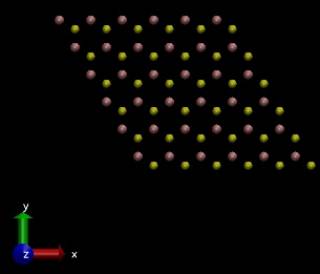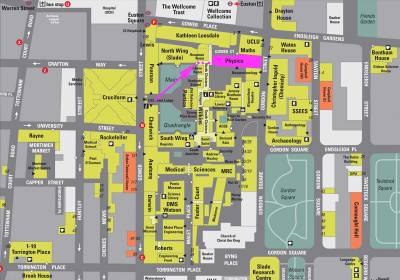HOME | MEMBERS | RESEARCH | PUBLICATIONS | LINKS |
About Me
Katherine graduated with an integrated master's degree in Chemistry with Research abroad from Imperial College London in 2020. Her master's project which was conducted at Leiden University was primarily focussed on high through put screening for artificial metallo proteins for use in photocatalytic water oxidation. During her time as an undergraduate she has worked at the University of British Columbia studying the electrolytic reduction of carbon dioxide into useful fuel. In addition, she has also worked at Durham University investigating the synthesis and characterisation of solid electrolytes for solid oxide fuel cells. During her research she developed an interest in combining theoretical and experimental studies to further understanding of materials. For her PhD she is focussing on the using a combination of theoretical modelling and experimental HAXPES to understand the structure and composition of interfaces between 2D materials and dielectric substrates. Her supervisors are Prof. Alexander Shluger and Dr. Anna Regoutz.

Research
Tungsten disulphide (WS2) is a high mobility 2D semi-conductor, it is of particular interest in electrical devices, with applications in field effect transistors and photovoltaic solar cells [1]-[3]. However, the effect of interfaces (Si/SiO2/WS2) on WS2 has not been greatly explored but the substrate it is grown on is expected to have a large effect on the properties of WS2 as well as the performance of the FET [1], [4]. This is also seen in work with molybdenum disulphide which has many similar properties as it is also a 2D material transition metal dichalcogenide [5].

Additionally, experimental growth of WS2 on silicon dioxide (SiO2) has shown the presence of impurities between the two substrates. This impurity is currently hypothesised to be water due to nanoconfined water previously seen at the SiO2/MoS2 interface [5], [6]. The presence of the water may lead to oxidation of WS2 potential creating WO3 or interact with the tungsten at a sulphur vacancy site as has been previously seen in some aging studies [7]-[9].
I plan to model these interface and impurity effects using DFT and supplement my computational data with experimental evidence using HAXPES.
References
[1] Z. Yuan, J. Hou, and K. Liu, "Interfacing 2D semiconductors with functional oxides: Fundamentals, properties, and applications," Crystals, vol. 7, no. 9, pp. 1-22, 2017, doi: 10.3390/cryst7090265.
[2] W. Choi, N. Choudhary, G. H. Han, J. Park, D. Akinwande, and Y. H. Lee, "Recent development of two-dimensional transition metal dichalcogenides and their applications," Mater. Today, vol. 20, no. 3, pp. 116-130, 2017, doi: 10.1016/j.mattod.2016.10.002.
[3] M. Samadi, N. Sarikhani, M. Zirak, H. Zhang, H.-L. Zhang, and A. Z. Moshfegh, "Group 6 transition metal dichalcogenidenanomaterials: synthesis, applications andfuture perspectives," vol. 3, p. 90, 2018, doi: 10.1039/c7nh00137a.
[4] L. Meng et al., "Two dimensional WS2 lateral heterojunctions by strain modulation," Appl. Phys. Lett., vol. 108, no. 26, 2016, doi: 10.1063/1.4954991.
[5] H. Lee et al., "Nanoscale Friction on Confined Water Layers Intercalated between MoS2 Flakes and Silica," J. Phys. Chem. C, vol. 123, no. 14, pp. 8827-8835, 2019, doi: 10.1021/acs.jpcc.8b11426.
[6] S. Palleschi et al., "On the role of nano-confined water at the 2D/SiO2 interface in layer number engineering of exfoliated MoS2 via thermal annealing," 2D Mater., vol. 7, no. 2, 2020, doi: 10.1088/2053-1583/ab5bf8.
[7] X. Xu et al., "Localized state effect and exciton dynamics for monolayer WS2," Opt. Express, vol. 29, no. 4, pp. 5856-5866, 2021, doi: 10.1364/oe.415176.
[8] B. Tao, P. R. Unwin, and C. L. Bentley, "Nanoscale Variations in the Electrocatalytic Activity of Layered Transition-Metal Dichalcogenides," J. Phys. Chem. C, 2020, doi: 10.1021/acs.jpcc.9b10279.
[9] J. Gao, B. Li, J. Tan, P. Chow, T. M. Lu, and N. Koratkar, "Aging of Transition Metal Dichalcogenide Monolayers," ACS Nano, vol. 10, no. 2, pp. 2628-2635, 2016, doi: 10.1021/acsnano.5b07677.
 Close
Close





